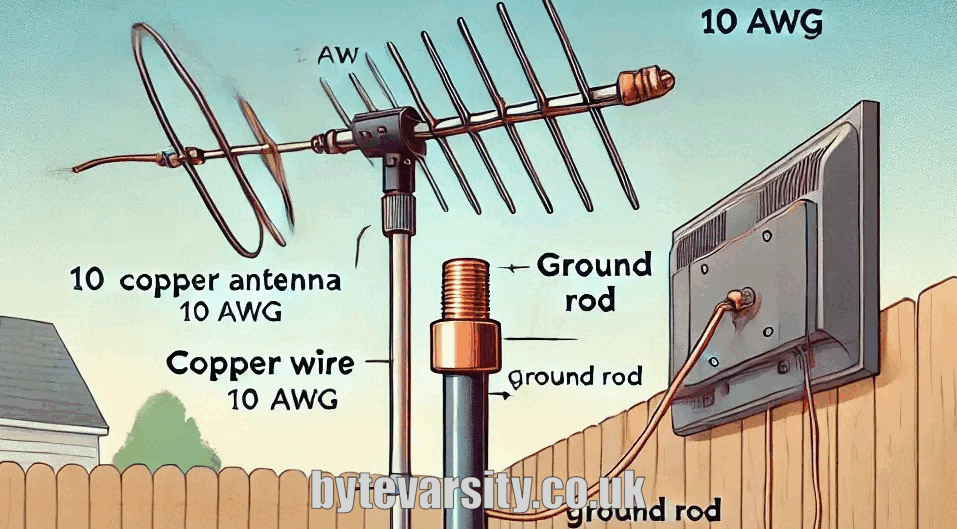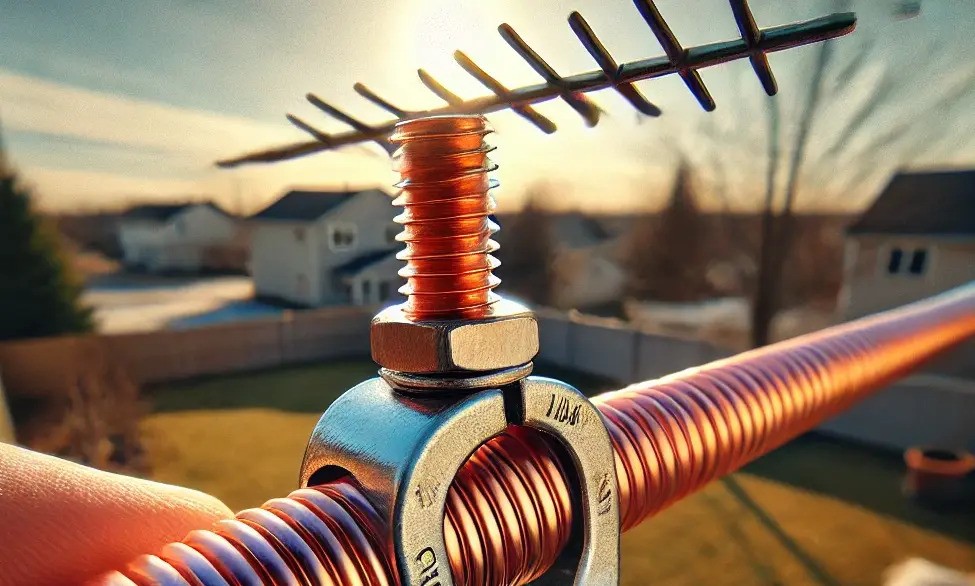Proper grounding for your TV antenna is essential for safety and performance. Choosing the right wire size is critical to this process, as it helps protect your equipment from dangers like lightning strikes and electrical surges. This article explores why grounding is important, how to select the appropriate wire size, and offers a step-by-step installation guide.
Why Grounding Your TV Antenna is Important
Grounding your TV antenna is a necessary safety measure for several reasons:
Protection from Lightning Strikes Grounding disperses the electrical charge from lightning, minimizing the risk of damage to your antenna and connected devices.
Preventing Electrical Surges Proper grounding helps prevent electrical surges from damaging your home’s electronics and appliances.
Improving Signal Quality and Equipment Longevity Grounding maintains signal clarity, ensuring a consistent broadcast. It also protects your antenna from electrical damage, prolonging its lifespan.
Problems with Improper Grounding
Risk of Equipment Damage Without proper grounding, your antenna and devices are more susceptible to electrical damage, which can lead to costly repairs or replacements.
Signal Interference and Degradation Poor grounding can cause signal interference, leading to reduced reception quality.
Choosing the Right Wire Size for Grounding
Selecting the correct wire size is crucial for effective grounding. Here’s what to consider:
Understanding Wire Gauge Standards The American Wire Gauge (AWG) system determines wire size. A lower AWG number means a thicker wire, which offers lower resistance and better conductivity.
Factors Affecting Wire Size Selection The appropriate wire size depends on factors like the distance between the antenna and the ground rod, the wire material, and local electrical codes.
National Electrical Code (NEC) Guidelines
NEC Recommendations for Antenna Grounding The NEC recommends a minimum of 10 AWG copper wires for grounding TV antennas.
Compliance with Local Regulations: Always adhere to local regulations, which may have additional requirements beyond NEC guidelines. This ensures safety and legality.
Types of Grounding Wires
Copper vs. Aluminum Wires Copper is preferred for grounding wires due to its superior conductivity and durability. Aluminum can be used but requires a thicker gauge to match copper’s conductivity.
Pros and Cons of Different Materials Copper wires, while more expensive, offer better performance and longevity. Aluminum wires are more affordable but may not be as reliable or durable.
Installing a Ground Wire Properly
Correct installation of the ground wire is essential for effective grounding. Follow these steps:
Tools and Materials Needed
- Grounding wire (copper or aluminum)
- Ground rod
- Wire clamps
- Hammer or ground rod driver
- Wrench
Step-by-Step Installation Process
- Select the Right Wire Size: Choose a wire that complies with NEC guidelines and local regulations.
- Install the Ground Rod: Drive the ground rod into the earth near the antenna.
- Connect the Wire: Attach the grounding wire from the antenna to the ground rod using wire clamps.
- Secure the Connections: Ensure all connections are tight and secure to prevent loose wires and ineffective grounding.
Common Installation Mistakes to Avoid
Using Incorrect Wire Size An incorrect wire size can compromise the grounding system’s effectiveness.
Poor Grounding Connections Lose or improper connections can lead to ineffective grounding, increasing the risk of electrical damage.

Conclusion
Properly grounding your TV antenna is crucial for protecting your equipment and ensuring optimal performance. Key steps in this process include choosing the right wire size, adhering to NEC guidelines, and correctly installing the ground wire. By following these practices, you can safeguard your antenna system from electrical hazards and enjoy uninterrupted signal quality.
For more in-depth guidance on mounting and grounding your TV antenna, check out this comprehensive guide.
